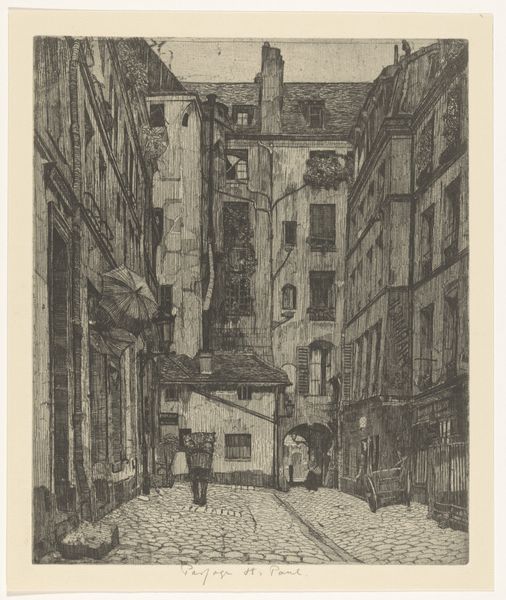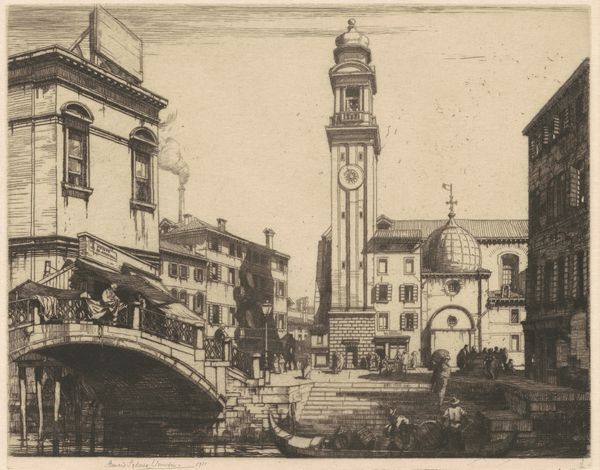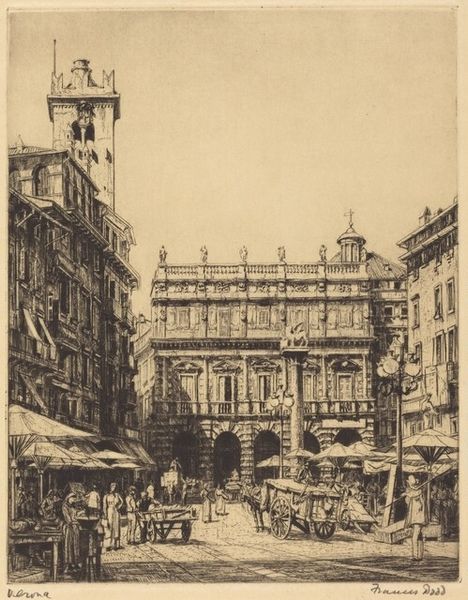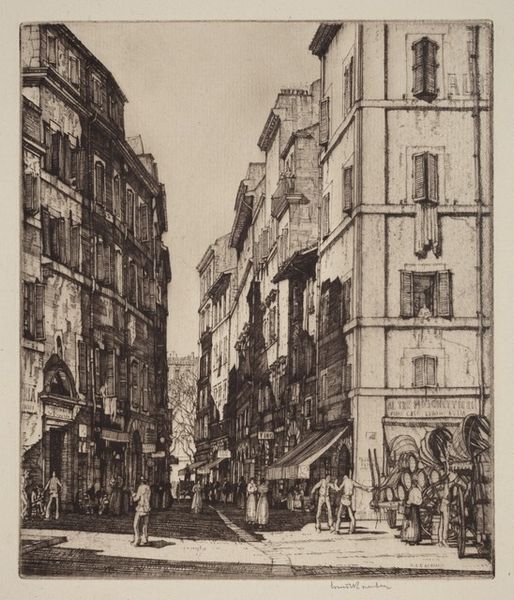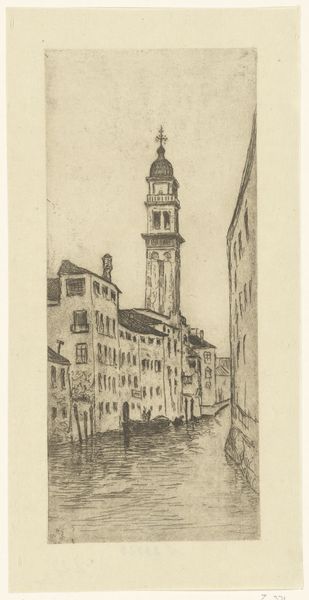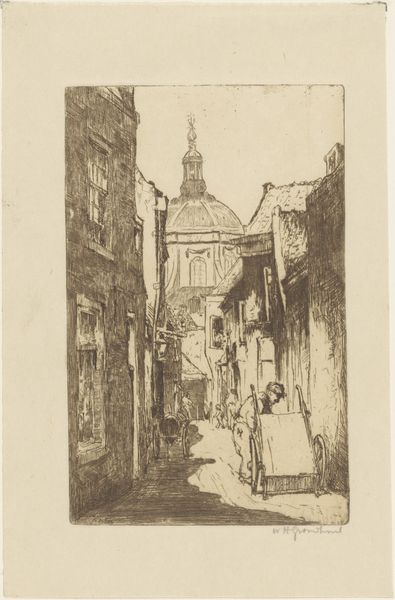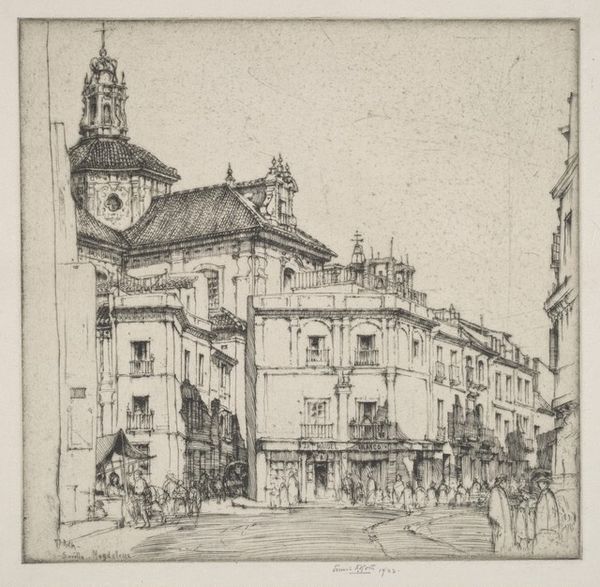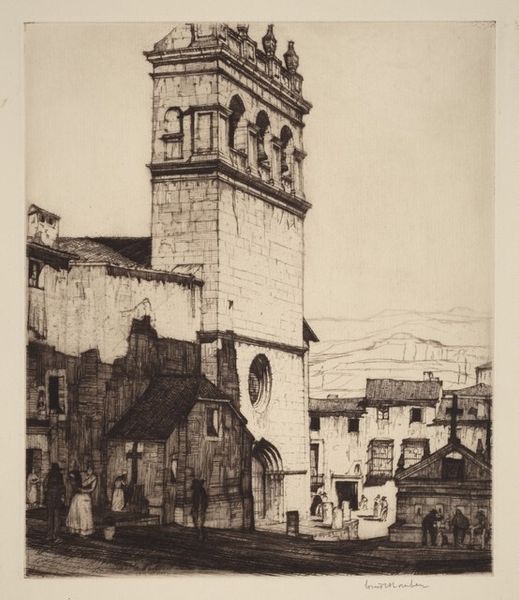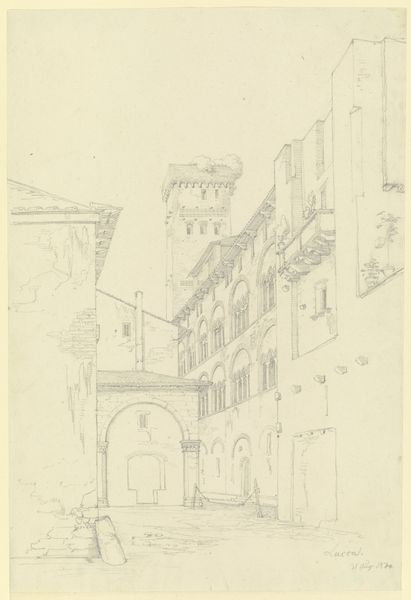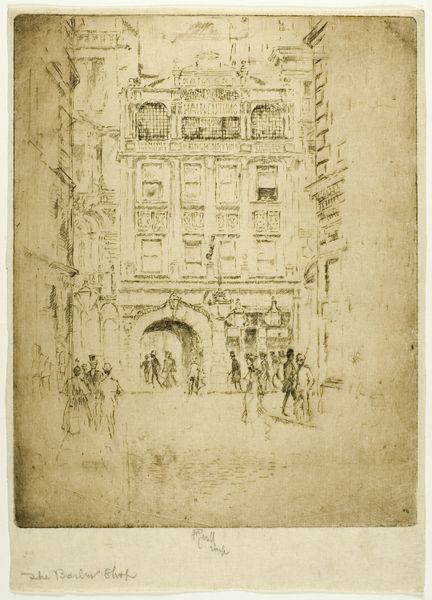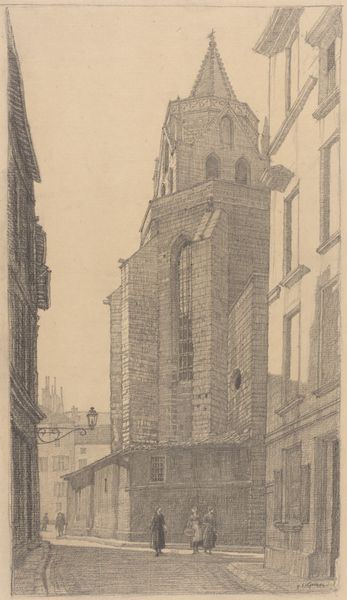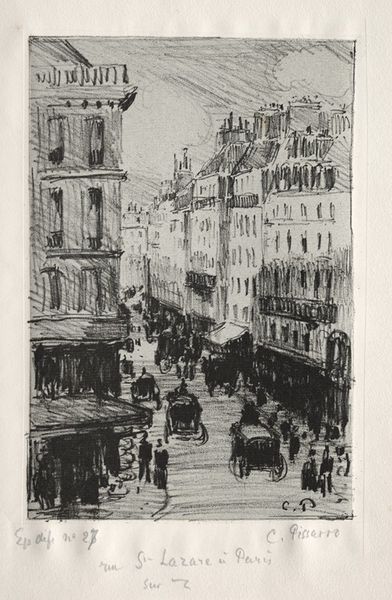
print, etching
# print
#
etching
#
landscape
#
etching
#
geometric
#
line
#
cityscape
#
italian-renaissance
Dimensions: 6 3/4 x 4 9/16 in. (17.15 x 11.59 cm) (image)8 1/4 x 5 1/8 in. (20.96 x 13.02 cm) (sheet)13 13/16 x 8 13/16 in. (35.08 x 22.38 cm) (mount)
Copyright: Public Domain
Editor: This is Richard Parkes Bonington's etching, "Bologna," from 1826-1827. It captures a busy street scene dominated by a tall tower. The print itself feels so delicate, almost fragile, yet it depicts this bustling city. How do you interpret the work, looking at it through a materialist lens? Curator: This etching exemplifies the intersection of artistic skill, industrial processes, and the market. Bonington’s mastery lies not just in representing Bologna but in using the relatively new medium of etching to mass-produce and distribute images of it. Notice the level of detail he achieves; it's remarkable that he was able to depict all that activity. We might ask, what audience was consuming these images, and what was the economic purpose of making images accessible in this way? Editor: So, you’re saying the medium itself is key, and who had access to it? It wasn't just about making art. Curator: Exactly. Consider the socioeconomic implications of printmaking. It made images available to a broader audience than painting, changing how people interacted with art and place. What do you make of the fact that Bonington chose *this* particular scene and viewpoint of Bologna to etch? Editor: It does feel quite grand but also shows ordinary people, like in a marketplace, so it is an image that the rising middle class might purchase as a kind of status symbol, a souvenir of their travels? Curator: Precisely. The print becomes a commodity, feeding into a growing culture of tourism and consumption. The material realities of the artwork—the paper, the ink, the etching process—are intrinsically linked to social and economic structures of the time. Editor: I never thought of an etching having such connections. It shows how something seemingly simple can open up to bigger ideas. Curator: Right. Examining art this way lets us challenge the divide between art and craft.
Comments
No comments
Be the first to comment and join the conversation on the ultimate creative platform.
